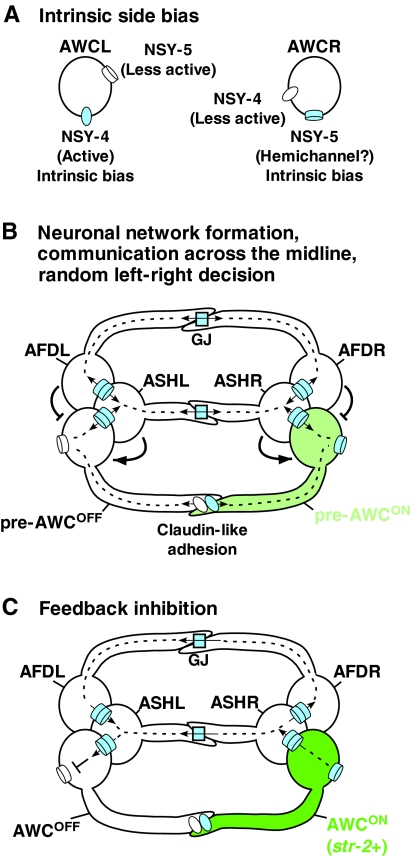Fig. 3.
Model of a neuronal signaling network for AWC asymmetry. (A) Intrinsic side bias of NSY-4 claudin-like protein and NSY-5 innexin gap juction protein in AWC neurons. NSY-4 activity has a bias toward the left AWC cell (AWCL), whereas NSY-5 activity, perhaps present as hemichannels, has a bias toward the right AWC cell (AWCR). (B) Random left-right AWC asymmetry decisions via neuronal network formation and communication across the midline. Gap junctions (GJ) and claudin-like adhesions connect bilateral AWC neurons and their neighboring neurons, including AFD and ASH neurons, in a network. Gap junctions mediate direct contact between the cell bodies of the respective neurons on each side, whereas axonal contacts through gap junctions and claudin-like adhesions mediate signaling across the midline between left and right neurons. AFD cells have a negative influence on the ipsilateral cell becoming AWCON, and ASH cells have a positive influence on the ipsilateral cell becoming AWCON. Both NSY-4 and NSY-5 are required to induce AWCON and the relative strengths of NSY-4 and NSY-5 activity between the two AWC cells specify random left-right asymmetry. The pre-AWCON cell indicates the AWC cell that turns on str-2 expression. (C) Feedback inhibition of NSY-4 and NSY-5 across the midline from the AWCON cell to the contralateral AWCOFF cell coordinates and strengthens str-2 gene expression in only one AWC cell.

